Hello, fellow bird enthusiasts and curious travelers! If you’re like me and find joy in the mesmerizing flights and unique songs of our feathered friends, then the Parc Naturel Régional d’Armorique in Brittany, France is an absolute must-visit.
This park, with its diverse landscapes from moors to mountains, offers a haven to some of the most enchanting bird species in the region. So, dust off those binoculars and get ready for a bird-spotting adventure of a lifetime!
Without further ado, let’s dive into the spectacular birds you might be lucky enough to spot here.
1. European Honey Buzzard (Pernis apivorus)
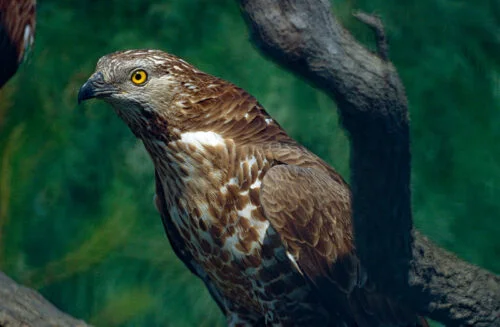
Ah, the European Honey Buzzard, a majestic raptor with a keen eye for sweet treats! Boasting a wingspan that can stretch up to 135 cm, these beauties are a sight to behold. With a predominantly brown body and a characteristic streaked head, they are quite the masters of disguise amidst the woodland canopies.
While the name might give away its penchant for honey, it’s primarily the larvae and pupae of wasps and bees that this bird preys on. Their hunting technique? Digging out nests using their strong feet. In the realm of love, they perform enthralling aerial displays. During winter, they migrate to tropical Africa, but in the warmer months, the forests and woodlands of Parc Naturel Régional d’Armorique serve as their playground.
2. Eurasian Woodcock (Scolopax rusticola)
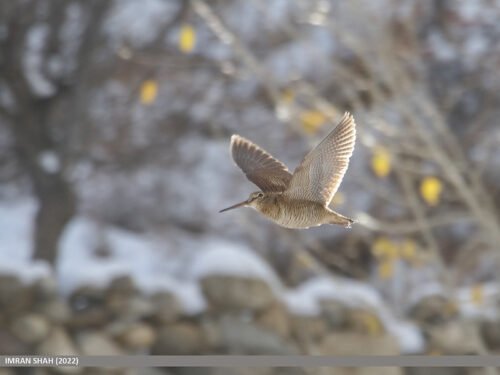
This little fellow might be a tad tricky to spot, given its cryptic plumage that blends perfectly with the leaf-littered floor of deciduous woodlands. The Eurasian Woodcock is famous for its roding display during breeding season— a spectacular aerial performance to woo a mate. As for their diet, they love feasting on insects, especially earthworms, using their long, slender bills. They’re residents of the park, but some might migrate from colder regions in winter. If you’re wandering the park’s woodlands during dusk or dawn, keep an ear out for their distinctive calls.
3. European Stonechat (Saxicola rubicola)
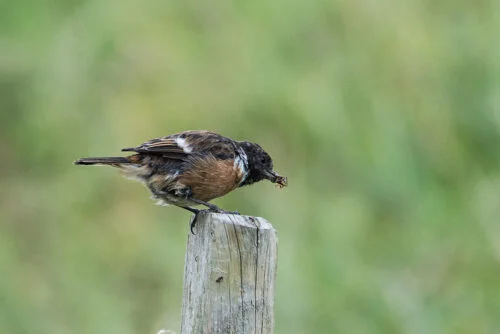
This delightful bird is a sight to behold with its black head, white neck patch, and orange-red breast. Preferring open scrubby areas, you’ll often see them perched on top of shrubs or tall plants.
They feed on insects, which they often catch in mid-flight using their sharp reflexes. As for courtship, the male flutters around the female showcasing his beautiful plumage. While many reside in the park year-round, some choose to migrate to warmer southern regions during winter.
4. Golden Oriole (Oriolus oriolus)
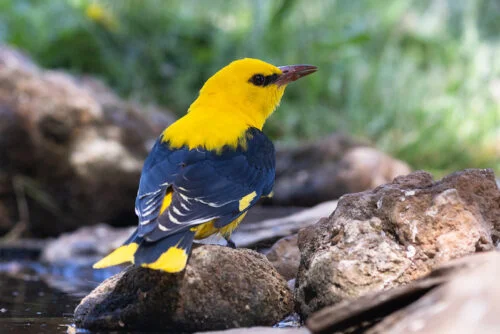
With its striking yellow plumage and melodious whistle, spotting a Golden Oriole is like finding a piece of sunlit gold among the trees. The dense woodlands of the park serve as their primary residence.
These birds are insectivores, but occasionally they indulge in fruits. Their courtship involves a series of melodic calls, often echoing through the woodland in early summer. During winter, they migrate to tropical Africa, making their time in the park all the more special.
5. Short-eared Owl (Asio flammeus)
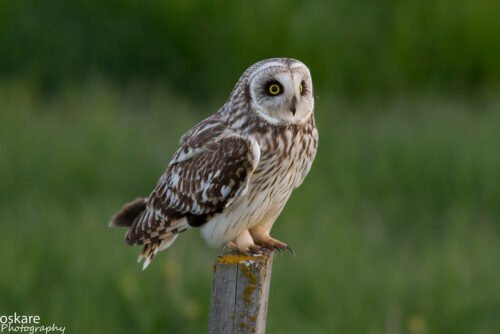
The Short-eared Owl is a treat for any birdwatcher. With a wingspan reaching nearly 110 cm, these owls have a pale buffy-brown body with a streaked appearance and distinct black eye patches, making them look perpetually surprised!
They adore the open grasslands and heaths of the park. Their diet mainly consists of rodents, which they catch with their exceptional night vision and silent flight. These owls are known to fly long distances, especially during winter, in search of food. If you’re in the park during the evening, you might just spot one gliding silently above the grasslands.
6. Cirl Bunting (Emberiza cirlus)
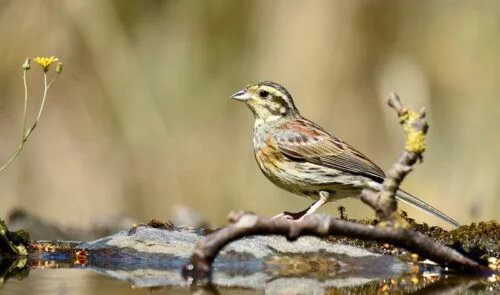
Sporting a vibrant yellow and black head, the male Cirl Bunting is a sight to behold. These birds are quite the music lovers, often serenading visitors with their melodious calls. Their preferred dining options include seeds and small insects.
The thickets and scrublands of Parc Naturel Régional d’Armorique are their ideal hangout spots. While they remain in the park year-round, they’re especially active during the spring mating season when their songs resonate beautifully throughout the landscape.
7. Merlin (Falco columbarius)
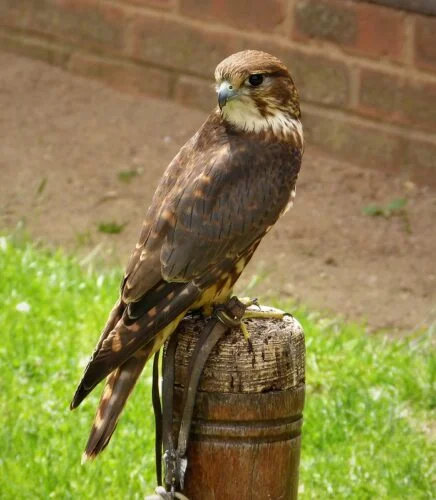
This small, swift raptor is nothing short of majestic. The Merlin has a dusky blue-gray back with a white underside, beautifully marked with black streaks. These agile birds love to hunt mid-air, preying on smaller birds with sheer precision. The park’s open moorlands and heathlands offer them ample hunting opportunities. They’re often seen perched silently, waiting for the perfect moment to launch their airborne attack. Come winter, many choose to migrate to warmer regions.
8. Marsh Harrier (Circus aeruginosus)
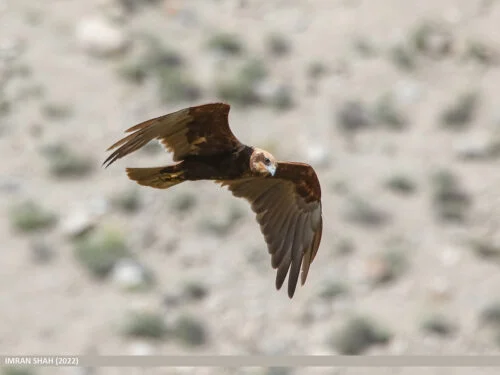
The Rock Ptarmigan is a small game bird with a remarkable ability to change its plumage according to the season.
In the winter, these birds sport a white plumage, while during the summer, they display a mix of brown, gray, and black feathers.
Rock Ptarmigans inhabit the alpine and subalpine zones of the Alps, where they prefer rocky terrain and tundra-like vegetation.
They primarily feed on leaves, buds, and berries, and are known for their low, croaking calls.
9. Black Woodpecker (Dryocopus martius)
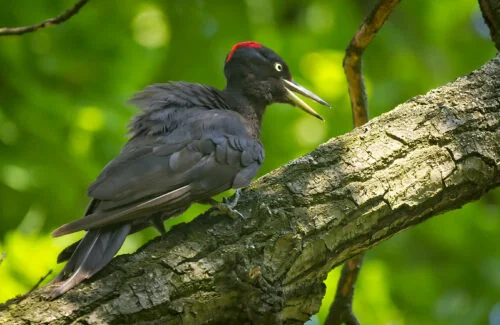
As one of Europe’s largest woodpeckers, this bird boasts a wholly black body with a distinctive red crown. Their echoing drumming can often be heard throughout the park’s dense woodlands. Feeding primarily on insects, especially ants, they use their strong beaks to dig into the bark of trees. Although they remain mainly elusive, the sight of a Black Woodpecker amidst the trees is a memorable experience for any birdwatcher.
10. Crested Tit (Lophophanes cristatus)
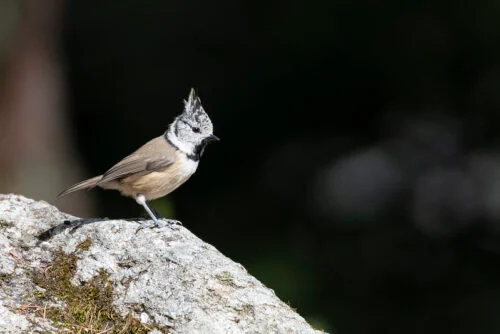
These tiny birds, adorned with a distinctive black and white crest, are the punk rockers of the bird world! Found primarily in the park’s coniferous forests, they feed on a mix of insects and seeds. Their calls, a series of rapid “chee-chee” sounds, often give away their presence before they’re spotted. They’re particularly active during winter when they join other tit species in foraging groups, making the chilly landscape of Parc Naturel Régional d’Armorique come alive with their spirited movements.
11. Firecrest (Regulus ignicapilla)
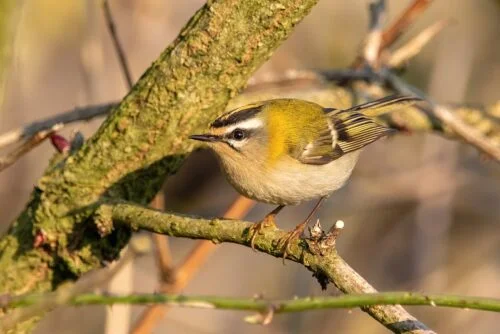
Often contending for the title of Europe’s smallest bird alongside its cousin, the Goldcrest, the Firecrest is a tiny bundle of energy. Its striking feature is a vivid orange and yellow crest bordered with black, giving it an almost royal appearance. They flit about the park’s mature woodlands, foraging for spiders and insects. Their high-pitched calls add a touch of magic to any walk through the woods.
12. Red-backed Shrike (Lanius collurio)
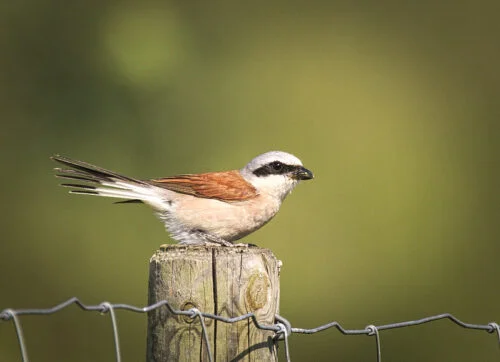
This passerine bird, often known as the “butcher bird”, has an intriguing feeding habit. They have a tendency to impale their prey—be it insects, small birds, or reptiles—on thorns or barbed wire, creating a larder for later consumption. With their striking appearance, males are mainly grey with a red back and black mask, while females don a more subdued brown. The park’s scrublands and hedgerows make for their perfect home.
13. Common Crane (Grus grus)
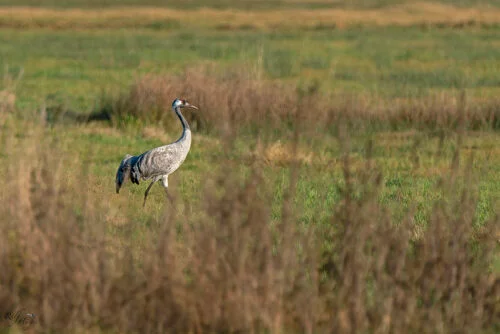
Standing tall with elegance, the Common Crane is a delight to observe. Exhibiting a mix of grey, black, and white, their red crown stands out distinctly. Known for their elaborate dances, they’re a joy to watch especially during the breeding season. They feed on a varied diet, from plants to small animals. While the wetlands of Parc Naturel Régional d’Armorique aren’t their primary residence, they are often spotted during migration periods.
14. Pied Flycatcher (Ficedula hypoleuca)
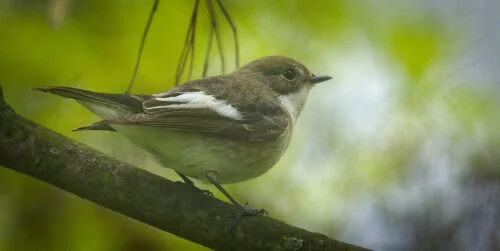
This small, agile bird is a delight to spot with its contrasting black and white plumage in males, and a more muted brown in females. As their name suggests, they’re adept at catching flies in mid-air. They can often be seen darting out from their perches to nab an unsuspecting insect. During the warmer months, the deciduous woodlands of the park become their chosen residence, filling the air with their sweet songs.
